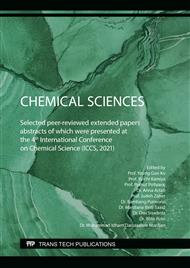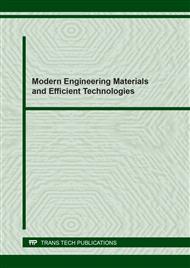[1]
Z. Siqi, L. Guangming, H. Wenzhi, H. Juwen, Z. Haochen, Recovery methods and regulation status of waste lithium-ion batteries in China: A mini-review, Waste Manage. Res. 37 (2019) 1142–1152.
DOI: 10.1177/0734242x19857130
Google Scholar
[2]
H. Bi, H. Zhu, L. Zu, Y. Gao, S. Gao, Y. Bai, Environment-friendly technology for recovering cathode materials from spent lithium iron phosphate batteries, Waste Manage. Res. 38 (2020) 911–920.
DOI: 10.1177/0734242x20931933
Google Scholar
[3]
F. Forte, M. Pietrantonio, S. Pucciarmati, M. Puzone, D. Fontana, Lithium iron phosphate batteries recycling: An assessment of current status, Crit. Rev. Environ. Sci. Technol. 51 (2021) 2232–2259.
DOI: 10.1080/10643389.2020.1776053
Google Scholar
[4]
T. Elwert, Q.S. Hua, K. Schneider, Recycling of lithium iron phosphate batteries: Future prospects and research needs, Mater. Sci. Forum 959 (2019) 49–68.
DOI: 10.4028/www.scientific.net/msf.959.49
Google Scholar
[5]
P. Yadav, C.J. Jie, S. Tan, M. Srinivasan, Recycling of cathode from spent lithium iron phosphate batteries, J. Hazard. Mater. 399 (2020) 123068.
DOI: 10.1016/j.jhazmat.2020.123068
Google Scholar
[6]
K.M. Winslow, S.J. Laux, T.G. Townsend, A review on the growing concern and potential management strategies of waste lithium-ion batteries, Resour. Conserv. Recycl. 129 (2018) 263–277.
DOI: 10.1016/j.resconrec.2017.11.001
Google Scholar
[7]
Z.N.F. Dyana, I. Perdana, A. Prasetya, Kinetics study on lithium leaching of spent lithium iron phosphate batteries in low concentration of sulfuric acid, in: Prosiding SNTKK 2020, G2.
Google Scholar
[8]
H. Patel, Batch and continuous fixed-bed adsorption of heavy metals removal using activated charcoal from neem (Azadirachta indica) leaf powder, Sci. Rep. 10 (2020) 16895.
DOI: 10.1038/s41598-020-72583-6
Google Scholar
[9]
J. Guo, Y. Song, X. Ji, L. Ji, L. Cai, Y. Wang, H. Zhang, W. Song, Preparation and characterization of nanoporous activated carbon derived from prawn shell and its application for removal of heavy metal ions, Materials 12 (2019) 241.
DOI: 10.3390/ma12020241
Google Scholar
[10]
BSN, Arang Aktif Teknis, Badan Standarisasi Nasional, Jakarta, (1995).
Google Scholar
[11]
L.F. Koong, K.F. Lam, J. Barford, G. McKay, A comparative study on selective adsorption of metal ions using aminated adsorbents, J. Colloid Interface Sci. 395 (2013) 230–240.
DOI: 10.1016/j.jcis.2012.12.047
Google Scholar
[12]
M.A.E. de Franco, C.B. de Carvalho, M.M. Bonetto, R. de Pelegrini Soares, L.A. Féris, Removal of amoxicillin from water by adsorption onto activated carbon in batch process and fixed-bed column: Kinetics, isotherms, experimental design and breakthrough curves modelling, J. Cleaner Prod. 161 (2017) 947–956.
DOI: 10.1016/j.jclepro.2017.05.197
Google Scholar
[13]
A. Wołowicz, Z. Hubicki, Carbon-based adsorber resin Lewatit AF 5 applicability in metal ion recovery, Microporous Mesoporous Mater. 224 (2016) 400–414.
DOI: 10.1016/j.micromeso.2015.12.051
Google Scholar
[14]
H. Qiu, L. Lv, B. Pan, Q. Zhang, W. Zhang, Q. Zhang, Critical review in adsorption kinetic models, J. Zhejiang Univ. Sci. A 10 (2009) 716–724.
DOI: 10.1631/jzus.a0820524
Google Scholar
[15]
S. Azizian, Kinetic models of sorption: a theoretical analysis, J. Colloid Interface Sci. 276 (2004) 47–52.
DOI: 10.1016/j.jcis.2004.03.048
Google Scholar
[16]
Y.S. Ho, G. McKay, Pseudo-second order model for adsorption processes, Process Biochem. 34 (1999) 451–465.
DOI: 10.1016/s0032-9592(98)00112-5
Google Scholar




